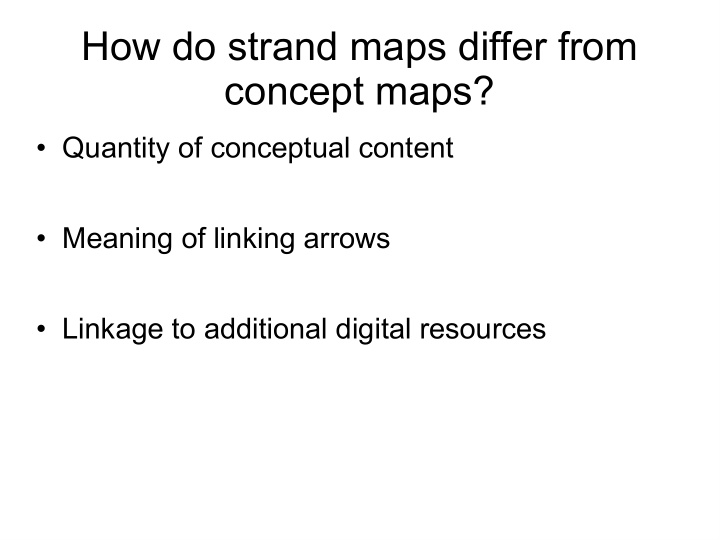



How do strand maps differ from concept maps? • Quantity of conceptual content • Meaning of linking arrows • Linkage to additional digital resources
Portion of Physical Science Strand Map: Force and Motion Progression Figure 1. Portion of the Physical Science strand map showing several force and motion standards ( From Strand Maps of the 2001/2006 Science and Technology/Engineering Standards http://www.doe.mass.edu/omste/maps/)
Standard = numbered phrase in the MA STE Framework (color coded to the topic it is currently associated with) A standards specifies what students should know and be able to do: • Demonstrated knowledge and skills • Assessable and/or measurable .
Concept = a conceptual unit of understanding (may be a whole or partial standard) Some standards were split if they included multiple concepts or skills that stand on their own (but not always).
Key to Strand Map Notation at the end of a standard indicate particular comments found on the corresponding notes pages. Ex: (?!) (2)
Assumptions Underlying the Strand Maps Some assumptions were made in the creation of the maps that will assist in interpreting the meaning of the maps.
Assumption 1 Links show how standards contribute to one another • Linking arrows = connections that are necessary for learning, NOT possible connections between concepts (In AAAS Atlas language: “one contributes to achieving the other”). • An arrow leaving a standard implies that the concept contributes to learning the concept of the next/connected standard. • These links are primarily based upon: • Wisdom of practice, professional judgment • Logic of the subject matter • Cognitive research specific to a particular idea • General principles of cognitive development: for ex: concrete before abstract; simple before complex
Assumption 2 The strand maps represent the current STE Framework • Standards are always kept within the grade span and strand in which they currently are found in the Framework. • The topic the standard is associated with may shift within the strand. • Coloring designates the original topic (where the standard currently resides in the Framework).
Assumption 3 Simple is better • Tried to have as few arrows as was necessary. • The placement of standards (or concepts) is first by affiliation to a topic, and then placed to reduce any “spaghetti” effects.
What patterns emerged from the Strand Maps? • Patterns that would prove useful to the science curriculum review process: identification of unsupported standards • Patterns that demonstrated aspects of Ausubelian Learning Theory
Missing Foundational Standards
Opportunity-to-Learn Gaps & Isolated Concepts
Diverging Standards
Converging & Crosslinking Standards
Recommend
More recommend